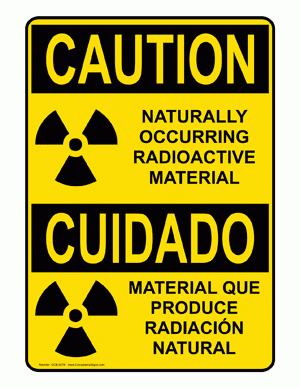Environmental disaster on Louisiana bayou highlights radioactive hazards of oil and gas drilling

Along with a massive sinkhole, anger is growing in Assumption Parish, La. as details emerge that state and corporate officials knew for over a year about the potential for structural failure at a salt mine used to store oil and gas drilling waste but failed to alert local residents.
Adding to the alarm is the fact that Texas Brine, the Houston-based company that owns the mine, received a permit from the Louisiana Department of Natural Resources in 1995 to dispose of naturally occurring radioactive material (NORM) from oil and gas exploration in the cavern, part of the Napoleonville Salt Dome. A sinkhole appeared at the site earlier this month, leading to an evacuation order for residents of 150 nearby homes, who for months had been reporting mysterious gas bubbles in the swamp and tremors in the area around Bayou Corne. The slurry hole is now over 370 feet wide and over 420 feet deep.
The Louisiana Department of Environmental Quality released results from the first set of NORM tests last week, reporting that "there were no detectable levels" on the sinkhole's surface. Those tests used handheld radioactive monitoring devices. DEQ scientists also took water and soil samples that have been sent to a lab for more detailed analysis; those results are expected this week.
Officials in Assumption Parish, which is located about 70 miles west of New Orleans, say they learned about the NORM disposal at the site through news reports. Sheriff Mike Waguespack told The Advocate newspaper that he was disturbed because he had assigned deputies to work around the sinkhole without knowing about the radioactive risk.
Texas Brine is the largest independent brine producer in the United States, supplying over 30 percent of the brine needed by the chloralkali industry, which uses it to produce chlorine and other chemical products. The company also offers underground storage for natural gas and other petroleum products in the massive salt caverns created by the mining process. Its storage customers include Houston-based Kinder Morgan, an oil and gas pipeline operator that's also one of the largest oil producers in Texas, and CenterPoint Energy, a natural gas utility also based in Houston.
NORM is naturally present in geologic formations that contain oil and gas deposits and is released through drilling activities. Because the extraction process concentrates the radionuclides, they are also referred to as "technologically enhanced naturally occurring radioactive material," or TENORM. These materials include uranium, thorium, radium and their decay products.
Drilling for both oil and natural gas create NORM/TENORM disposal issues. Last year, a New York Times investigation found that wastewater produced by fracking for natural gas was tainted with higher levels of radioactive materials than previously known and was being hauled to sewage plants unable to treat it properly, resulting in releases to rivers and risks to the environment and human health.
The average radiation levels of soils across the United States range from a low of 0.2 picocuries per gram to 4.2 pCi/g, with Gulf Coast soils among those more likely to contain radioactive material. In comparison, produced water from oil and gas production can range from a low of 0.1 pCi/g to 9,000 pCi/g, according to the EPA.
That upper level greatly exceeds even the highest the levels of radiation in ash from coal-fired power plants, which ranges from 1.6 pCi/g to 9.7 pCi/g. The potentially dangerous radioactivity levels of coal ash got attention in the wake of the 2008 coal ash spill at the Tennessee Valley Authority's Kingston plant in eastern Tennessee.
The U.S. Environmental Protection Agency reports that while the radioactivity levels in produced waters from oil and gas drilling are generally low, the volumes are large:
The ratio of produced water to oil is approximately 10 barrels of produced water per barrel of oil. According to the American Petroleum Institute (API), more than 18 billion barrels of waste fluids from oil and gas production are generated annually in the United States.
Produced waters contain levels of radium and its decay products that are concentrated, but the concentrations vary from site to site. In general, produced waters are re-injected into deep wells or are discharged into non-potable coastal waters.
Disposal of this waste into salt caverns is classified as a type of deep well injection.
The EPA exempts wastes produced during exploration, development and production of oil and natural gas from regulation as hazardous waste under the federal Resource Conservation and Recovery Act. It leaves oversight up to the states.
In 1992, Louisiana became the first state to develop and implement a NORM regulatory program. It requires operators who handle materials with significant NORM concentrations to obtain a general license from the state, and it requires NORM to be disposed of at licensed NORM disposal facilities.
Texas Brine is currently drilling a relief well to investigate the structural problems at the cavern. Company officials say it could take as long as 40 days to get answers.
Tags
Sue Sturgis
Sue is the former editorial director of Facing South and the Institute for Southern Studies.
